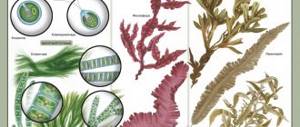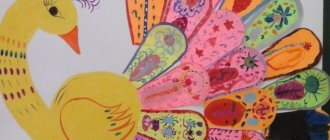Lesson-presentation on biology grade 11
Slide 0
Lesson-presentation on biology grade 11
Slide 1
All life on Earth is connected to its environment. According to the nature of the action, the connections of an organism with the environment can be abiotic (this includes factors of inanimate nature - physical and chemical conditions of the environment) and biotic (factors of living nature - interspecific and intraspecific relationships
Slide 2
The action of a factor can be: Optimal (under favorable conditions) Limiting (with excess or deficiency) Question: How do you understand the term “limiting factor”?
Slide 3
Slide 4
In a complex of environmental factors, the one that is closest to the limit of endurance “Liebig Barrel” has the strongest effect.
Slide 5
This is the property of an organism to adapt to a particular range of environmental factors. Ecologically non-plastic species are called stenobionts. Ecologically plastic species are called eurybionts. Examples: Koala - stenophage Pig - euryphage Eurybiontism contributes to the wide distribution of the species Crow - eurytherm Neon - stenotherm
Slide 6
Temperature has a regulating effect on many life processes of plants and animals, changing the intensity of metabolism. The activity of cellular enzymes ranges from 10 to 40 ° C; at low temperatures, reactions proceed slowly, but when the optimal temperature is reached, enzyme activity is restored. The endurance limits of organisms in relation to the temperature factor for most species do not exceed 40-45 °C. The vital activity of the body is carried out within the range from -4 to 45 °C.
Slide 7
Pubescence of leaves (reflects rays, protects from overheating) Different intensity of evaporation (transpiration) of water Reduction (or increase) of the surface area of leaves Pubescent leaves of oleaginus Saxaul Monstera
Slide 8
In relation to temperature, animals are divided into: Poikilothermic - cold-blooded, not having a constant body temperature Homeothermic - warm-blooded Fill in the blanks in the text: With a decrease in environmental temperature, poikilothermic animals have a metabolism ………. Most of them, with the onset of cold weather, fall into …………., or into suspended animation - a temporary reversible suspension of all life …… And in homeothermic animals, a decrease in environmental temperature causes …………..metabolism. This is necessary for the production of …………………. and maintaining ………………t body. Slows down, hibernation, processes, increased intensity, heat, constant
Slide 9
Bergmann's rule As you move north, the average body size in populations of warm-blooded animals increases. ? - How do you explain this rule from the standpoint of thermodynamics? ? — Where are you more likely to meet large wolves—in Karelia or in the Bryansk region?
Slide 10
In warm-blooded animals in cold climatic zones, there is a tendency to reduce the protruding parts of the body. Arctic fox. Fox. Fennec. The essence of the rule. Heat production (heat release by body cells) is proportional to body volume. Heat transfer (heat loss, its transfer to the environment) is proportional to the surface area of the body. Thin protruding parts of the body, having a small volume and a large surface area, increase heat transfer, i.e. lead to loss of heat from the body.
Slide 11
1. With the onset of cold weather: Hibernation. Accumulation of sugar or glycerol solution in cells (the freezing temperature of the cytoplasm of cells decreases) Accumulation of subcutaneous fat. Growth of dense undercoat in mammals in winter. 2. During the hot season: Summer hibernation Nocturnal activity Increased evaporation of water through respiration and skin
Slide 12
“We don’t think about it, but everything that walks, moves, lives on our planet is a child of the Sun” Camille Flammarion Light in the form of solar radiation provides all life processes on Earth. For organisms, the wavelength of perceived radiation, its intensity, and the duration of exposure (length of day, or photoperiod) are important. Composition of sunlight: 1. Ultraviolet rays with a wavelength greater than 0.3 microns constitute approximately 10% of the radiant energy reaching the earth's surface. In small doses they are necessary for animals and humans. Under their influence, vitamin D is formed in the body. 2. Visible light with a wavelength of 0.4 - 0.75 microns. Visible light energy accounts for about 45% of the total radiant energy striking the Earth. Visible light is least attenuated when passing through dense clouds and water. Therefore, photosynthesis can occur in cloudy weather and under a layer of water of a certain thickness. Blue (0.4 - 0.5 µm) and red (0.6 - 0.7 µm) light is especially strongly absorbed by chlorophyll.
Slide 13
Light-loving species (heliophytes) Shade species (sciophytes) Shade-tolerant (facultative heliophytes) pine wheat fern oxalis Can live both in the light and in a shaded place: Forest herbs, shrubs, most meadow plants
Slide 14
3. Infrared (thermal) radiation – makes up 45% of the total amount of radiant energy falling on the Earth. Infrared rays increase the temperature of plant and animal tissues and are well absorbed by inanimate objects, including water.
Slide 15
- this is a change in the physiological activity of organisms depending on the length of daylight hours. Photoperiod is a kind of trigger mechanism, including physiological processes that consistently lead to growth, flowering of plants in the spring, fruiting in the summer and shedding leaves in the fall, as well as molting and accumulation of fat, migration and reproduction in birds and mammals, and the onset of the resting stage in insects. Changes in day length are perceived by the visual organs of animals or by special pigments in plant leaves.
Slide 16
Long-day plants, the flowering of which occurs when the daylight period is 12 hours or more (potatoes, rye, oats, wheat, etc.) Short-day plants with a photoperiod of 12 hours or less (most tropical flowering plants, soybeans, millet, hemp, corn and many other plants of the temperate zone). Dahlias are short-day plants. By artificially shortening the length of the day, it is possible to regulate the timing of their flowering.
Slide 17
1. Red and blue rays of visible light enable the process of photosynthesis. 2. Visible light is needed for visual orientation of animals. 3. UV rays promote the production of vitamin D in human skin and the formation of a tan. 4. Thermal (infrared) rays warm the planet and all bodies on it. 5. Provides the phenomena of photoperiodism, diurnal and other types of cycles in nature
Slide 18
1. The importance of water for the body Water is the most important component of a cell, accounting for 60-80% of its mass. The biological significance of water is determined by its physicochemical properties. The water molecule is polar, so it can act as a solvent. Many substances enter into various chemical reactions only in the presence of water. Dielectric properties and the presence of bonds between molecules determine the high heat capacity of water, which creates a “thermal buffer” in living systems, protecting unstable cell structures from damage during local short-term release of thermal energy. By absorbing heat during the transition from liquid to gaseous state, water produces cooling; the effect of evaporation used by organisms to regulate body temperature.
Slide 19
1. Soil moisture determines the species composition of the natural community (with less than 250 ml of precipitation per year, a desert landscape develops) 2. Humidity modifies the effect of temperature: temperature has a stronger effect at very high or very low air humidity. Tropical shower
Slide 20
aquatic plants with high humidity; semi-aquatic plants, terrestrial-aquatic; land plants; plants of dry and very dry places, live in places with insufficient moisture, can tolerate short-term drought; succulents are succulent and accumulate water in the tissues of their bodies. Class assignment: Give examples of plants from each group
Slide 21
warm-bloodedness – maintaining a constant body temperature by the body; hibernation - prolonged sleep of animals during the winter season; anabiosis is a temporary state of the body in which life processes are slowed down to a minimum and all visible signs of life are absent (observed in cold-blooded animals and animals in winter and during hot periods); frost resistance - the ability of organisms to tolerate negative temperatures; dormancy is an adaptive property of a perennial plant, which is characterized by the cessation of visible growth and vital activity, the death of ground shoots in herbaceous forms of plants and the fall of leaves in woody forms; summer dormancy is an adaptive property of early flowering plants (tulip, saffron) in tropical regions, deserts, and semi-deserts.
Slide 22
1. Powerfully developed root system 2. Waxy cuticle on the leaves 3. Reduced leaf blades (spines or scales) 4. Storage of water in the stem (cacti) Camel thorn Saxaul
Slide 23
moisture-loving animals; intermediate group; dry-loving animals.
Slide 24
Radiation with very high energy, which can lead to the formation of pairs of positive and negative ions, is called ionizing. Its source is radioactive substances contained in rocks; Moreover, it comes from space. Of the three types of ionizing radiation that are of environmental importance, two are corpuscular radiation (alpha and beta particles). Alpha particles are helium atoms, their travel length in air is only a few centimeters. Alpha particles cannot pass through a sheet of newspaper
Slide 25
Beta rays are fast electrons, their travel length in the air is several meters, and in animal tissues - several centimeters. Electromagnetic (gamma radiation and similar X-ray radiation). Gamma radiation easily penetrates living tissue; this radiation can pass through the body without having any effect, or it can cause ionization along a large part of its path. In general, ionizing radiation has the most destructive effect on more highly developed and complex organisms; the person is particularly sensitive. Beta particles pass through paper but do not pass through glass. Gamma particles pass through paper, glass and a person's hand
Slide 26
Slide 27
The ionization created by radiation in cells leads to the formation of free radicals. Free radicals cause destruction of the integrity of chains of macromolecules (proteins and nucleic acids), which can lead to both massive cell death and carcinogenesis and mutagenesis. Actively dividing (epithelial, stem, and also embryonic) cells are most susceptible to the effects of ionizing radiation. As the radiation dose increases, only the frequency of occurrence of these effects increases. They can appear both many years after irradiation (malignant neoplasms) and in subsequent generations (mutations).
Slide 28
A pollutant is any chemical substance or compound that is found in an object of the natural environment in quantities exceeding background values and thereby causing chemical pollution. By origin, pollutants are divided into: Pollutants of natural origin - entering the natural environment as a result of natural, usually catastrophic processes (for example, contamination of adjacent areas with ash during a volcanic eruption) Pollutants of anthropogenic origin. (entered the environment as a result of human activity.
Slide 29
in the atmosphere - acid gases (carbon dioxide, sulfur dioxide, nitrogen oxides), suspended particles (soot, aerosols of acids and heavy metal compounds), vapors of petroleum products. in the hydrosphere - soluble salts of heavy metals, organic compounds, petroleum products (one should distinguish between pure wastewater, for example, after cooling circuits of heat exchange equipment, which does not cause chemical pollution, but does cause thermal pollution) in the lithosphere (especially in its upper fertile layer - soil) - salts heavy metals, petroleum products. It is necessary to distinguish between inert substances (for example, glass), which cause only mechanical pollution of soils in the biosphere; the most dangerous are xenobiotics, that is, substances that are not part of the natural metabolism in the body, of which dioxins are the best known.
Slide 30
Slide 31
Slide 32
1. Substances are waste from technological production, but can also be formed in nature. (Sulfur dioxide, nitrogen oxides, compounds of copper, zinc, mercury...) 2. Artificial substances created by man. Pesticides are toxic chemicals. Insecticides - against insect pests, Herbicides - against weeds.
Slide 33
Environmental toxicity Soil acidification Changes in water properties (increased mineralization, surfactant saturation) Depletion of the species composition of natural communities.
Slide 34
a) herbicides; b) phytoncides; c) fungicides; d) insecticides
Slide 35
— abiotic environmental factors — biomass — biogeocenosis — limiting factor — photoperiodism — pollutant — ecological plasticity — environmental factor
Slide 36
1. One kilogram of fresh leaves of different plants contains different amounts of chlorophyll: plantain - 1.8 g, aspidistra - 4.0 g. Which of these plants is light-loving and which is shade-tolerant? Justify your answer. aspidistra plantain
Slide 37
2.What ecological rule dictates that the long-eared hedgehog lives in the southern regions, and the common hedgehog in more northern regions? 3. Marine fish that live at different depths have different eye structures. Most fish have very large eyes (for example, sea bass). In even deeper layers, the fish's eyes are small or completely absent. Explain the structural features of the visual organs of fish living at different depths.






